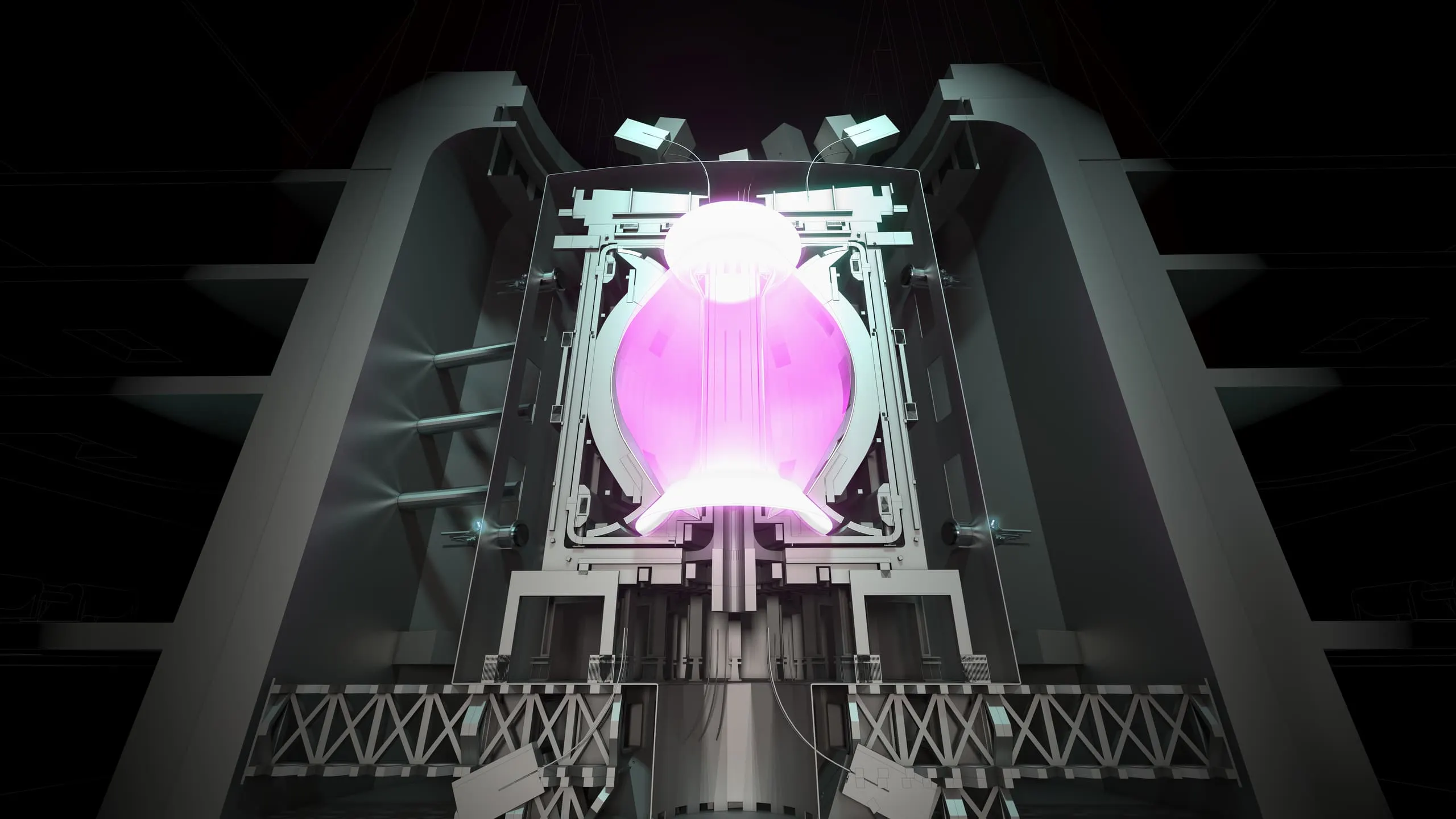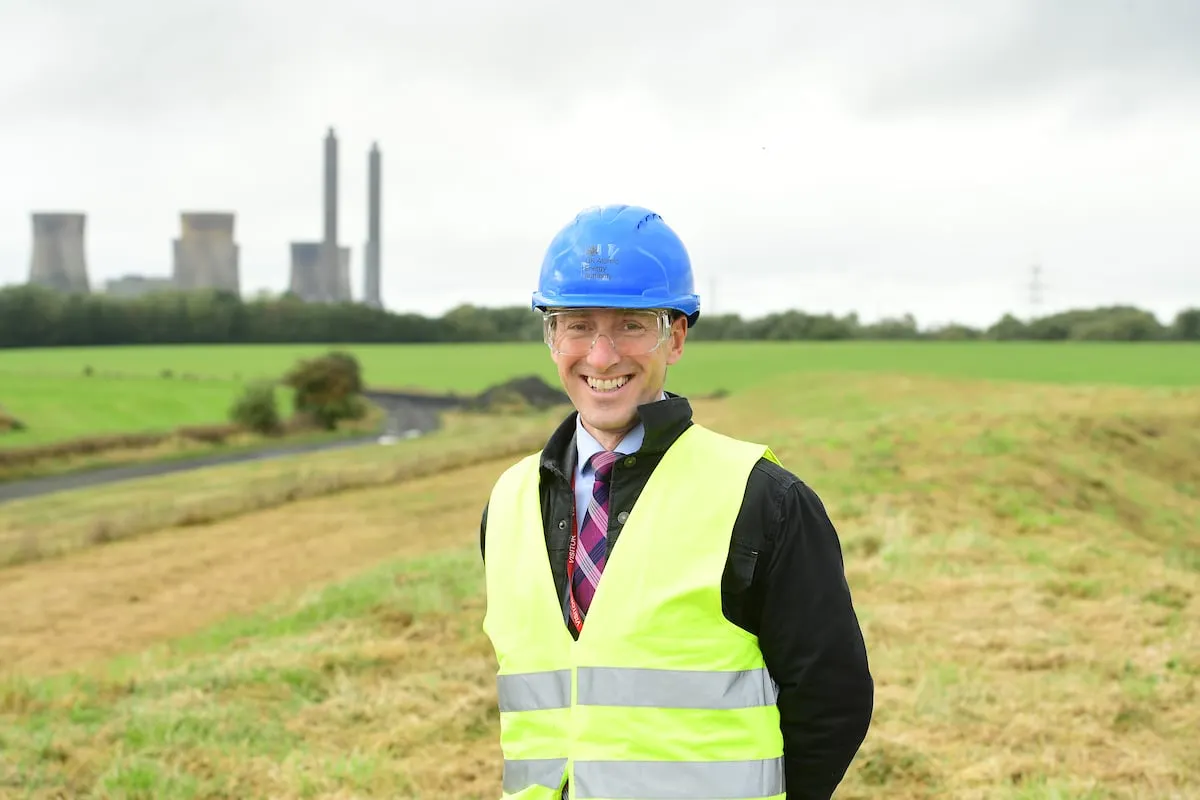UK: £410m new funding into fusion energy and STEP partner shortlists released
By Naomi Scott-Mearns
The UK Government has announced a £410 million investment into fusion energy over 2025 and 2026 as part of their Plan for Change which is targeting economic growth. The announcement was made on 16th January 2025 and is a record funding amount for fusion in the UK.
At the same time, UK Industrial Fusion Solutions Ltd (UKIFS) has unveiled the shortlisted organisations competing to become Engineering Partner and Construction Partner for STEP (Spherical Tokamak for Energy Production).
So what have they done, and why is it significant?

The future STEP Tokamak with burning plasma. ©United Kingdom Atomic Energy Authority
What have they done and why is it significant?
The announcement of £410 million for fusion research will be directed towards four main areas:
- Delivering STEP – the UK’s plan for a fusion prototype powerplant
- Fusion Futures – investing in skills development for fusion and LIBRTI, a new fusion fuel R&D facility
- Decommissioning and repurposing JET – researching best practice for end of life of fusion plants
- Supporting the UK Atomic Energy Authority’s (UKAEA) existing research
The investment into fusion shows that the UK Government see fusion as a valuable contribution to the UK economy now and into the future and that fusion is an important area of spending for energy security and net zero.
Professor Sir Ian Chapman, the CEO of UKAEA said, “I am delighted by the strong support from government to delivering fusion as a safe, sustainable energy of the future, and to anchor this exciting new industry in the UK.”
STEP (Spherical Tokamak for Energy Production) is the UK’s world-leading programme to design and build a prototype fusion energy plant at the West Burton site in Nottinghamshire. STEP will be delivered by a public-private sector integrated team consisting of UKIFS, UKAEA as fusion partner and the engineering and construction partners. These key long-term and strategic partnerships will play a central role in growing a UK-led fusion industry that will stimulate economic growth.
The shortlisted organisations for STEP’s Engineering Partner are:
• Celestial JV, consisting of Eni UK Limited as the lead member and AtkinsRealis, Jacobs Clean Energy (now Amentum), Westinghouse and Tokamak Energy as other members.
• Phoenix (UK) Fusion Limited, consisting of Cavendish Nuclear Ltd as the lead member, KBR Ltd and Assystem Energy and Infrastructure Ltd as other members.
The shortlisted organisations for STEP’s Construction Partner are:
• Inovus Infrastructure, consisting of Balfour Beatty Civil Engineering as the lead member and Vinci Construction, AtkinsRealis, Mott Macdonald and WSP as other members.
• ILIOS, consisting of Kier Infrastructure and Overseas as the lead member and Bam Nuttal, Nuvia Limited, AECOM Ltd, Turner and Townsend Infrastructure Ltd and Amanda Levete Architects Ltd as other members.
• Ferrovial Mace JV, consisting of Ferrovial Construction UK Ltd as the lead member and Mace Consult Ltd as the other member.
The partnership contracts will be worth an initial combined value of hundreds of millions of pounds until 2029, the duration of the first contract period, which aims to be the start of a long-term collaboration.
Why is it impressive? – record fusion funding
This is record funding for fusion in the UK on a funding-per-year basis. In 2023, the previous UK Government under the Conservatives announced up to £650 million for fusion following the decision to not associate with Euratom. This funding was for 2023 to 2027, but with the change of Government in July 2024 former spending plans have changed.
The funding announcement is part of the Plan for Change, which is the UK Labour Government’s list of milestones they aim to achieve by the end of the parliament. The plan includes kickstarting economic growth and making Britain a clean energy superpower – two milestones which investment into fusion energy can help to achieve.
Indeed, Ed Miliband the Energy Secretary said “Britain is at the forefront of this global race to deliver fusion, and today’s record level of funding will provide investment and economic growth through our Plan for Change, delivering on net zero and creating the clean energy of the future.”

Paul Methven, CEO of UKIFS, at West Burton. ©United Kingdom Atomic Energy Authority.
Why is it important? – fusion as key to economic growth both regionally and nationally
Let’s face it, money is important, so this additional funding is very welcome. Additionally, it’s good to see fusion included in the new government’s growth narrative and for fusion to be seen as a vital energy source for the future, especially now with vastly increasing energy demands from AI….
Also this week, the UK government announced its AI Opportunities Action Plan, a “blueprint to turbo-charge AI”. It includes dedicated AI Growth Zones to speed up planning for AI infrastructure, of which the UKAEA’s Culham Campus in Oxfordshire would be the country’s first. The aim is to integrate AI into other activities, boost AI infrastructure and fuel economic growth, with the AI Growth Zone at Culham also serving “as a testing ground to drive forward research on how sustainable energy like fusion can power our [the UK’s] AI ambitions,” said the press release.
STEP will be a major area of spending under the £410 million investment and will channel funding regionally in the UK, in the vicinity of the former West Burton coal plant in Nottinghamshire, where the STEP plant is to be sited. Job creation and skills growth is expected in the Nottinghamshire and East Midlands area as a result of STEP.
The Mayor for the East Midlands, Claire Ward, said “I am delighted the government is committed to this investment in the East Midlands and look forward to working together to kickstart a green industrial revolution, creating skilled jobs in our former coal mining communities.”
The 16th January was also the same day that the shortlist of the construction and engineering partners to build the STEP prototype fusion plant was announced. By early 2026 it is expected that one construction partner and one engineering partner will have been selected to work with UK Industrial Fusion Solutions – the company set up to deliver STEP.
“Down-selection of STEP partners is important progress for the programme,” said Tris Denton, Fusion Industry Association, “and my congratulations to all those FIA members in consortia that are progressing.”
It’s great that the UK has a firm plan for developing fusion energy and the surrounding industry and supply chain. One question that still remains, though, is whether and how the UK government intends to support private fusion developers, particularly as the UK could be a welcome site for a number of foreign fusion companies looking to build major facilities.
What next?
UKAEA’s immediate focus will be on channelling the investment into the intended areas. STEP aims to be operational in the 2040s and intends to nominate its construction and engineering partners within the next year to help on the journey to delivery.
JET completed its last experiments at the end of 2023 and has moved into decommissioning and repurposing. Valuable research will continue on JET, helped by the investment, as it becomes the first fusion plant to undergo decommissioning and repurposing for different uses.
Globally, there is a race to commercialise fusion – to tackle climate change, address energy security and power our economies. The UK Government announcement today puts the UK firmly in the race, but there’s still more to be done to create a truly supportive ecosystem.
On the subject of AI, there are many uses for AI in fusion research as explored in a report released by the Clean Air Task Force (featuring work by Fusion Advisory Services) that explores the transformative role of high-performance computing (HPC) and artificial intelligence (AI) tools in advancing fusion energy.
